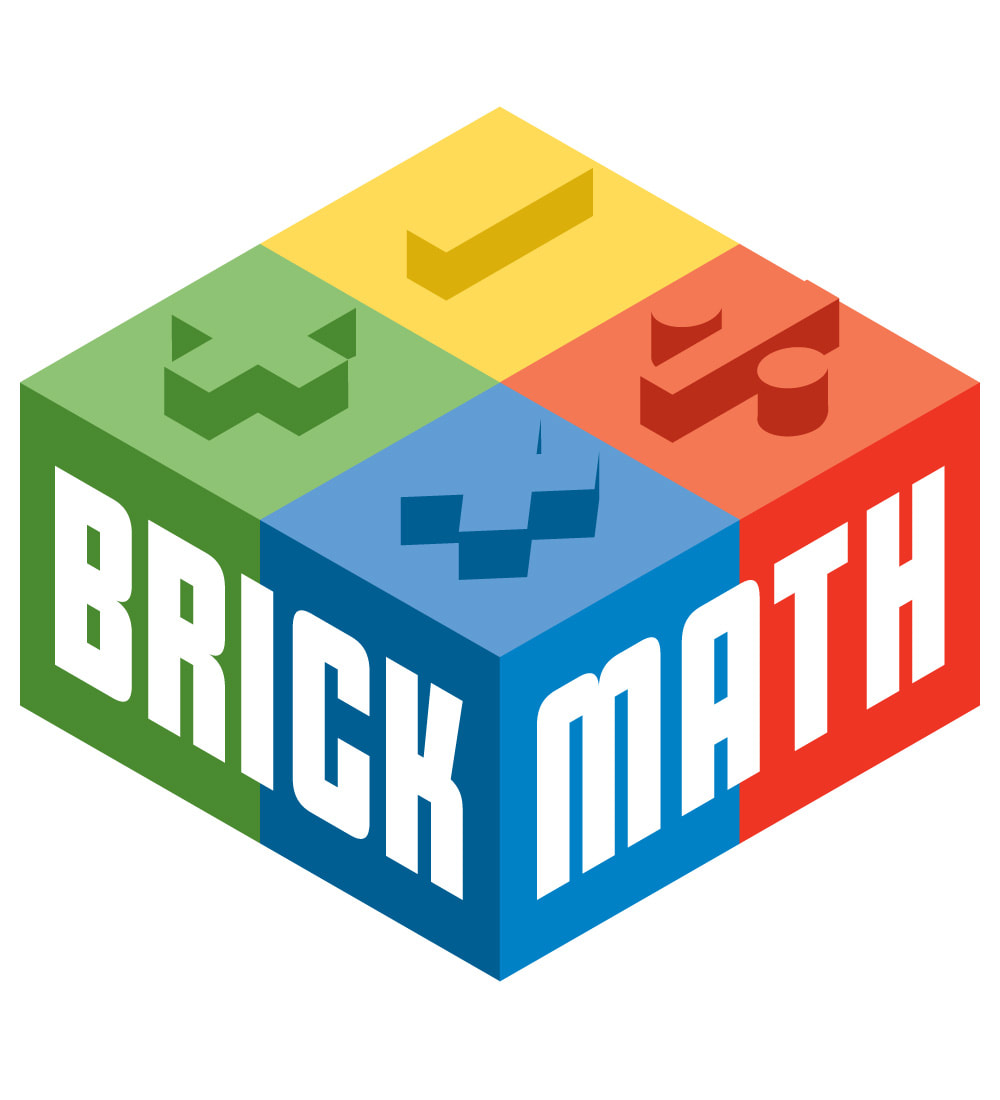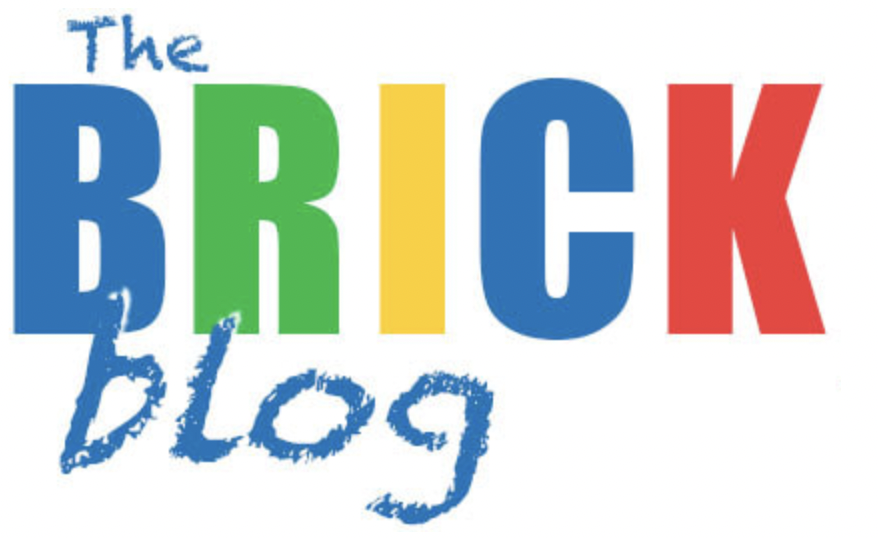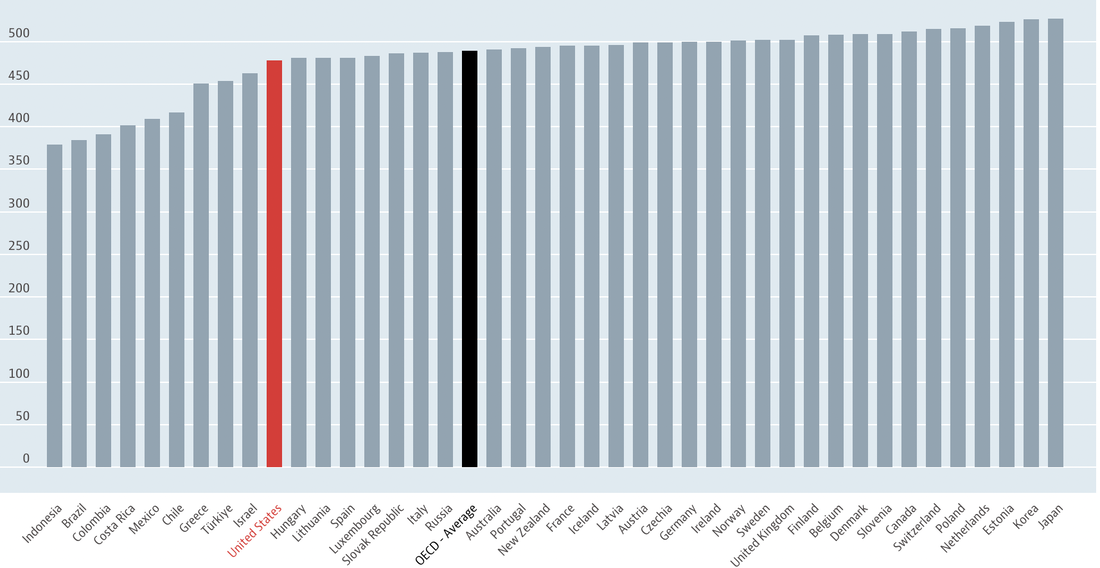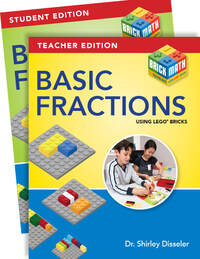 Journalist Jessica Grose has two recent op-eds in the New York Times that question the use of computers for children’s learning in subjects including mathematics. Students are using their school-issued Chromebooks and iPads to watch YouTube videos and play video games instead of following the teacher’s lesson. When kindergarteners learn to read only on iPads, not physical books, their comprehension suffers. Studies about technology-based education show that giving kids computers develops their computer proficiency, but not much else. Screens can help as practice tools, but they aren’t the best method for learning the basics of math and reading. 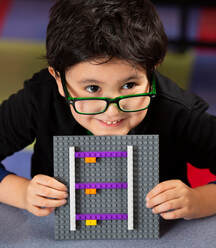 Our solution: Brick Math. The curriculum was developed as a screen-free method of learning. With Brick Math, students build models of math problems with plastic building bricks in thirteen K - 8th grade math content areas that range from Counting to Pre-Algebra. The students draw a model with bricks and explain with words why the model shows the math. The brick model makes the math tactile and concrete. For many students, the physical process of building with bricks is the key to learning when a traditional curriculum hasn’t worked for them. 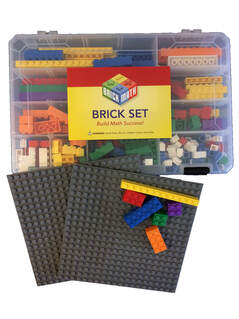 Computers and screens may have their place in the classroom as “supports on the margins,” but their use seems limited. A screen-free program like Brick Math engages students fully and promotes true learning. Brick Math is a complete math curriculum for kindergarten through 8th grade that models the math with bricks. The curriculum is divided into 13 separate content areas: Counting, Addition, Subtraction, Multiplication, Division, Basic Fractions, Basic Measurement, Fraction Multiplication, Fraction Division, Advanced Measurement and Geometry, Decimals, Data and Statistics, and Pre-Algebra. Students can start anywhere in the curriculum. It can be used as a complete math curriculum or brought in as a supplement to help students who aren't having math success with other programs. 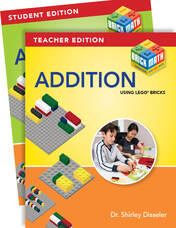 Brick Math works in many applications: for homeschooling, math intervention, enrichment, and as a whole-school program. Materials are simple and affordable. For an innovative way to teach and learn K - 8th grade math, check brickmath.com. The website includes videos for both teacher training and direct instruction of students. You can learn more about how Brick Math improves students' math test scores and hear what people who are using Brick Math have to say about the program.
0 Comments
Math scores in US are still lower than most other industrialized countries, according to the results of the PISA exam, given to students around the world. While reading scores have improved a bit, math still lags far behind in this test of 15-year-olds. In fact, in math, the US ranks 28th out of 37 participating countries. Why the discrepancy between the US and other countries? According to the New York Times, other countries consider math to be a learned skill, but in the US, math is seen more as a talent. This type of thinking can be very detrimental to students who may be pigeonholed early as not being a “math kid.” 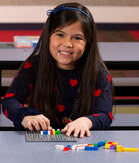 At Brick Math, we firmly believe that every student can learn math. According to author Dr. Shirley Disseler, “There is no such thing as a student who is bad in math. They just need to be taught with methods that work.” 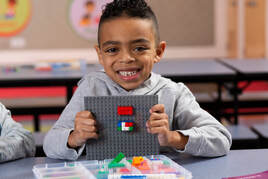 Brick Math uses LEGO® bricks to model math in 13 subjects from kindergarten through eighth grade. Students learn the “why” behind the math, which is key to building their math skills over time. The Brick Math program is perfect for visual and tactile learners. It makes math, which is an abstract concept, into concrete representations that students can see and feel. Brick Math is a modular program that can be brought in wherever students are falling behind in any of the 13 subjects in the K-8 math curriculum. 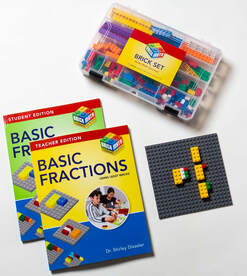 Brick Math is a K-8 math curriculum that uses LEGO® bricks to model 13 different math subjects: Counting, Addition, Subtraction, Multiplication, Division, Basic Fractions, Basic Measurement, Fraction Multiplication, Fraction Division, Advanced Measurement and Geometry, Decimals, Data and Statistics, and Pre-Algebra. Brick Math works in many applications: for homeschooling, math intervention, enrichment, and as a whole-school program. Materials are simple and affordable. If you are a math teacher or a parent with a student at home who is learning K-8th grade math, check brickmath.com. The website includes videos for both teacher training and direct instruction of students. You can learn more about how Brick Math improves students' math test scores and hear what people who are using Brick Math have to say about the program. The results of national testing are in. Math scores for 13-year-olds are down by 9 points since just before the start of the pandemic. For lower-performing students, declines are even larger: 12-14 points. The NAEP’s Long-Term Trend Assessment for Mathematics looked at the math performance of 13-year-olds across the US in 2020 and again in 2023. In every region of the country, and in every gender and racial group, students have declined in their math performance. According to Peggy Carr, commissioner of the National Center for Education Statistics, the pandemic accelerated the math decline, virtually wiping out the performance gains students made from the 1970s to 2020. 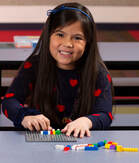 How do educators help students turn this around so kids can start building math success during the K-8th grade years? Brick Math is a solution that has been shown to increase test scores and improve students’ mathematical knowledge base. It’s a complete K-8 curriculum that teaches math by modeling math with LEGO® bricks. It’s fun to learn and easy to teach! The 13 math subjects in the Brick Math curriculum start with Counting and Cardinality for the earliest learners and go through Pre-Algebra (typically taught in late middle school). Students and teachers can start at any point in the curriculum. The materials are simple and very affordable:
In-person and online professional development is available for schools that want to fast-track the program into their curriculum. The 13 subjects in Brick Math include: Grades K - 2: Grades 3 - 4: Grades 5 - 6: Grades 7 - 8: Dr. Shirley Disseler, author of the Brick Math series, developed the concept after years of working with LEGO® Education. “I wanted to use LEGO® bricks to teach the basics of the math curriculum. It’s the perfect manipulative for teaching students the why behind the math to help them develop true mathematical understanding.” 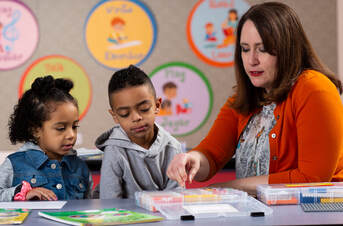 Students and teachers around the world are using Brick Math: as a whole-school curriculum, for students who are struggling to learn math, and for gifted education. The program aligns with state and national standards and is based on research from the most respected educators in the field. Homeschoolers are also using Brick Math with great success. For more information, check BrickMath.com or contact [email protected].
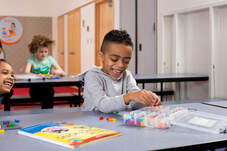 This is the time of year schools start planning for their summer programs. We’ve been busy lately, responding to school districts planning to use the Brick Math curriculum this summer. 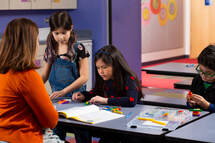 Brick Math is the perfect way to engage struggling students in math summer school. Naturally, students enjoy using the bricks as math manipulatives. But even more importantly, Brick Math is a modular program that targets specific math skills. Students learn using different methods than other math programs, and experience shows that they respond very positively to the hands-on program. 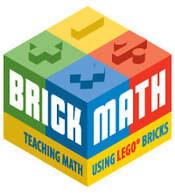 Brick Math offers free curricula of summer programs for each of the 11 subject areas for schools who choose Brick Math as their summer school curriculum. These programs can be easily adapted to your school’s schedule. To view a sample of Brick Math’s summer program, click here. The sample shows Day 1 of a 12-day summer program for Basic Fractions. 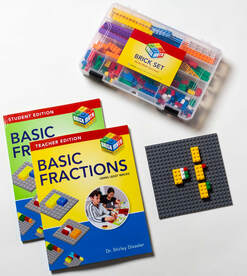 The 11 Brick Math topics include: Brick Math has been shown to increase students’ test scores significantly. Students gain a real understanding of the reasons why behind the math when they learn with Brick Math.
Please call 802-751-8002 or email us if you'd like to learn more about how to use Brick Math in your school's summer program.  Math scores for students across the US have declined since the start of the pandemic, according to the most recent National Assessment of Educational Progress (known as the “Nation’s Report Card”). For fourth graders, only 36 were found proficient in math. Even worse were the scores for eighth graders: only 26 percent proficient in math. The term “proficient” means that the students have demonstrate competency in the subject matter in their grade level. 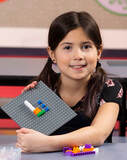 What does this mean for schools? Students need to focus on academic recovery. Students need to get back their math knowledge, and fast. Since math instruction builds on what students have previously learned, more and more students will be set back if they aren’t given the tools to catch up first. 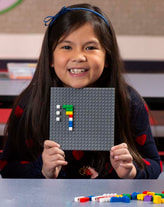 Brick Math is a perfect solution for schools, teachers, and parents who want to help their elementary and middle school students catch up in math. Brick Math teaches 11 subjects of basic math using LEGO® bricks. Modeling math with bricks helps students understand what the math means. The program is perfect for students who are struggling and haven’t learned through other teaching methods. It’s adaptable to all learning environments: whole-class instruction, small groups, and individual tutoring. 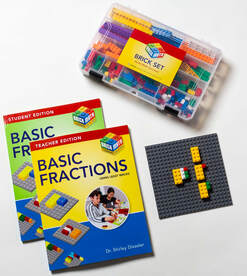 The school district of Davidson County, North Carolina, recently brought in Brick Math throughout the district to help bring their students back to levels of math proficiency. According to Dr. Deana Coley, Assistant Superintendent of Curriculum and Instruction for the district, “We asked our teachers which program students would have the most success with, and overwhelmingly, the teachers requested Brick Math.” 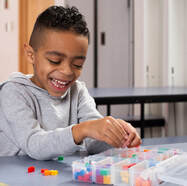 Brick Math is a K-6 math curriculum that uses LEGO® bricks to model 11 different math subjects: Counting, Addition, Subtraction, Multiplication, Division, Basic Fractions, Basic Measurement, Fraction Multiplication, Fraction Division, Advanced Measurement and Geometry, and Decimals. It works for math intervention, enrichment, as a whole-school program, and even homeschooling. Materials are simple and affordable. If you teach math or have a student at home who is learning K - 6th grade math, check brickmath.com. The website includes videos for both teacher training and direct instruction of students. You can learn more about how Brick Math improves students' math test scores and hear what people who are using Brick Math have to say about the program.
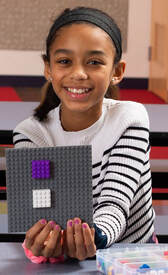 Studies show that up to 30 percent of people report moderate to high levels of math anxiety, according to author Malia Wollan in an article that appeared on March 27, 2022 in the New York Times. Children as young as 6 can show signs of anxiety about math. Many adults (parent and teachers) make the mistake of telling children they are bad (or good) at math, which can increase the child’s apprehension about math. 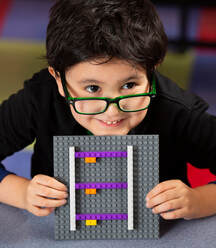 One of the reasons students become anxious about math is that math is taught in a high-pressure situation, often by teachers who are uneasy about their own math skills. The Brick Math program can help reduce students’ math anxiety. Students “see” the math by building models with LEGO® or LEGO-compatible bricks. They engage with the math by drawing solutions to math problems and by explaining the process they used in writing or orally. In this program, students use a wide variety of sensory skills that reinforce how to solve math problems. 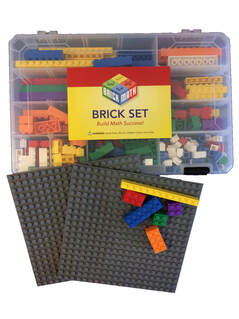 Addition, subtraction, multiplication, division, and fractions come alive to students when they learn with LEGO® bricks. The New York Times article recommends, “When you work on calculations with children, try to do so with curiosity, playfulness and a sense of adventure.” When math becomes fun, the student’s anxiety level decreases. That’s the power of Brick Math. Brick Math is a K-6 math curriculum that uses LEGO® bricks to model 11 different math subjects: Counting, Addition, Subtraction, Multiplication, Division, Basic Fractions, Basic Measurement, Fraction Multiplication, Fraction Division, Advanced Measurement and Geometry, and Decimals. It works for homeschooling, math intervention, enrichment, and as a whole-school program. Materials are simple and affordable.
If you teach math or have a student at home who is learning K - 6th grade math, check brickmath.com. The website includes videos for both teacher training and direct instruction of students. You can learn more about how Brick Math improves students' math test scores and hear what people who are using Brick Math have to say about the program.  Acclaimed science writer Annie Murphy Paul wrote about the tremendous value in solving problems using real, 3-D objects in the New York Times Sunday, June 13. It’s so applicable to Brick Math, we just had to quote a little of the article: “Three-dimensional space offers additional opportunities for offloading mental work and enhancing the brain’s powers. When we turn a problem to be solved into a physical object that we can interact with, we activate the robust spatial abilities that allow us to navigate through real-world landscapes. This suite of human strengths, honed over eons of evolution, is wasted when we sit still and think. “This holds true for a wide variety of problem types — including basic arithmetic, complex reasoning, planning and challenges that require creative insight. People who are permitted to manipulate concrete tokens representing elements of the problem to be solved bear less of a cognitive load and enjoy increased working memory. They learn more and are better able to transfer their learning to new situations. They are less likely to engage in symbol pushing, or moving numbers and words around in the absence of understanding. They are more motivated and engaged and experience less anxiety. They even arrive at correct answers more quickly.” [italics and boldface are ours] 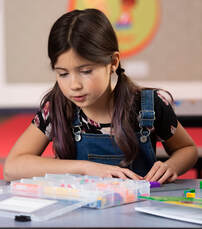 This is the essence of the Brick Math method. Students model K – 6th grade math problems using LEGO bricks, and in doing so, they activate their brains and really learn what the math means. Imagine building this brick model of dividing 24 by 6: 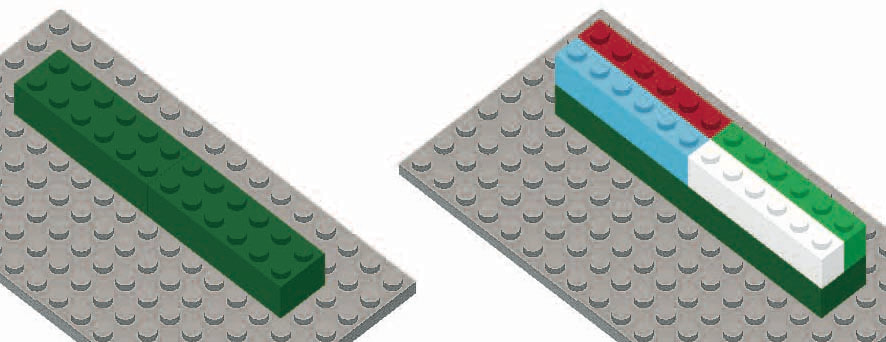 The brick model demonstrates the concept of dividing a set of 24 into 4 sets of 6. Using the 3-D bricks to model the problem helps a student, in the words of writer Paul, "navigate through real-world landscapes." Students put this another way: "I can SEE the math!" Later, the teacher introduces the number sentence 24 ÷ 6 = 4 so students learn how to write the problem using numerals. This problem is from Division Using LEGO® Bricks. Brick Math methods are based on learning theory from a number of leading experts. The program has been tested on students and shown to improve how well they learn math. Brick Math is a K-6 math curriculum that uses LEGO® bricks to model 11 different math subjects: Counting, Addition, Subtraction, Multiplication, Division, Basic Fractions, Basic Measurement, Fraction Multiplication, Fraction Division, Advanced Measurement and Geometry, and Decimals. It works well for homeschooling, math intervention, enrichment, and as a whole-school program. Materials are simple and affordable.
If you teach math or have a student at home who is learning math, check brickmath.com. The website includes videos for both teacher training and direct instruction of students. You can learn more about how Brick Math improves student math test scores and hear what people who are using Brick Math have to say about the program. 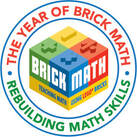 We’re putting the 2020-2021 school year in the rear-view mirror and looking ahead to new resources for students as they go back to in-person learning. Students will need something extra to regain the math skills they’ve lost in the past school year. That’s why the 2021-2022 school year is “The Year of Brick Math”! 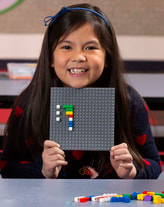 There’s never been a better time for Brick Math: Teaching Math Using LEGO Bricks. The innovative K – 6 math curriculum utilizes kid-friendly LEGO bricks to model math with direct, hands-on techniques that are easy to teach and fun to learn. The method is as far from Zoom screens and worksheets as it could be. The lessons are engaging and effective. Many students have lost significant ground in math during the past year. And parents are very concerned about their children’s lack of academic progress. 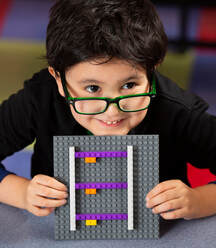 The Brick Math program can help strengthen students’ math skills. Any or all of the 11 different K – 6 math subjects can be added to an existing math program to help struggling students. Thousands of schools, teachers, and parents use Brick Math in various ways: as a complete math curriculum, for instruction in specific content areas, for remediation, in small-groups, or working one-on-one. Brick Math school programs can include professional development, coaching, and individual support for teachers. 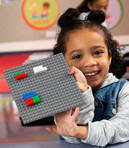 Learning math with LEGO bricks is a proven method that gets powerful results. Research has shown that students who learn with Brick Math improve their test scores dramatically. Right now, students need innovative learning solutions that work. Brick Math is the solution to help students rebuild the math skills they have lost in the past year. Make 2021-22 your Year of Brick Math! Visit www.brickmath.com or call 802-751-8802 for more information. It’s been a tough year for schools and students, especially for math instruction. Many students have lost substantial math skills during this past school year because virtual learning is a poor substitute for in-class, hands-on learning. Research shows the deficits are far greater for math than for reading. 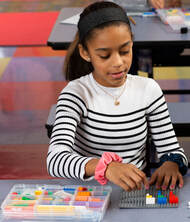 But there is a solution. Brick Math: Teaching Math Using LEGO Bricks is a program used by thousands of schools around the country to help K – 6 students catch up in math skills they desperately need. Brick Math has programs for schools to jump-start the math curriculum with specific, hands-on instruction in 11 math subjects. This proven program engages students with LEGO-compatible bricks to help students quickly gain back what they've lost and move ahead in their math skills. Brick Math programs can include professional development, coaching, and individual support for teachers. 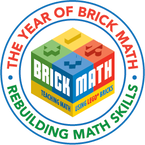 We’re calling the 2021-2022 school year “The Year of Brick Math,” because it’s the perfect curriculum to help K – 6 students rebuild their lost math skills. Brick Math uses LEGO bricks to model the math, which results in higher engagement with the lessons and deeper understanding of the math. Here’s why Brick Math works to bring students' math skills back to where they need to be: • Modular Components: The program is modular, so it can be brought in at whatever level students need to make up for the math they didn’t learn this past year. The K - 6 curriculum is divided into 11 different subject areas, starting with Counting and Cardinality in the earliest grades, and moving through Advanced Geometry and Measurement in grades 5 - 6. • No Screens Necessary! The hands-on nature of Brick Math is just right for screen-exhausted students. They build models of the math with their own set of bricks as they learn, and they utilize pencil and paper to draw the models and explain their thinking process. • Easy to Get Started Teaching techniques are easy to learn and straightforward. Professional development for implementation and periodic coaching of staff throughout the year are available to ensure that teachers are comfortable teaching with Brick Math. • Proven Results Research shows that students who learn with Brick Math improve their test scores dramatically. Learning math with LEGO bricks is a proven method that gets powerful results. Brick Math is the curriculum solution for schools that need to help students rebuild the math skills they have lost in the past year. Visit www.brickmath.com or call 802-751-8802 for more information.
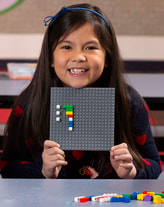 It’s an exciting time for American schools. Tomorrow President Biden will sign the COVID relief bill, which allocates $128 billion for state and local education. Twenty percent of those funds must address learning loss by students who have struggled to learn in virtual or hybrid settings. According to research, students have fallen far behind in math since March 2020, with much more severe learning losses in math than in reading. There are five key ways that a math curriculum can help students who have fallen behind in math: 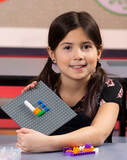 1. Students have fallen behind in math at different rates and in different subjects. Brick Math is a modular program that allows students to catch up in any of 11 specific K-6 math areas (Counting and Cardinality through Advanced Measurement and Geometry). 2. As students move back to full-time classroom learning, teachers can now take advantage of teaching methods that work well in the classroom setting. Brick Math works especially well in a classroom environment because it is hands-on. Students build models of the math with LEGO bricks, and teachers can quickly scan the room to make sure students are correctly learning the concepts. 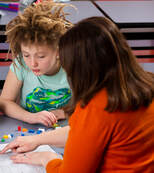 3. K – 6 math is often taught using small groups of students whose math skills are at the same level. Brick Math works well in small groups because teachers can target specific areas of learning needs and help students with quick adjustments. 4. Students learn math best through a variety of methods. With Brick Math, students think through problems under the guidance of the teacher. Then they build models of the math with bricks. They then draw their models and explain the math concept in writing. These steps help solidify students’ learning. 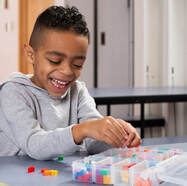 5. Research shows that kids learn more when they are engaged and stay longer on the task. With Brick Math, students have fun while they learn, so their level of engagement is high. Many teachers report that students ask for “more Brick Math,” even when it’s time to move on to another subject! Brick Math is ready to help schools with a program that can accelerate students’ math skills. If your students have fallen behind in math, please visit BrickMath.com to find out more about how Brick Math can help your students recover from math learning losses over the past year. The website includes training videos, testing results, research findings, and much more. |
Categories
All
Archives
July 2024
|

